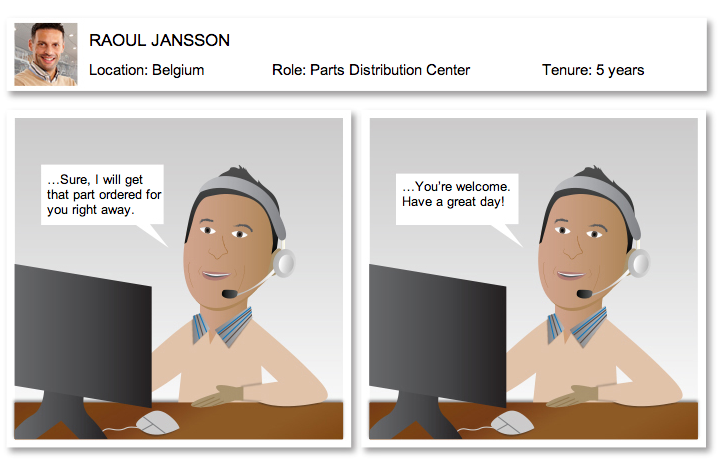
Our eLearning Challenges blog series explores the common situations our clients face when deploying learning solutions. We use samples from real projects to help you uncover the best way to meet these challenges in your organization. This is Part 4.
When we communicate, we seek to be understood. That’s why our everyday conversations, meetings and presentations are probably full of informal language, jargon and micro-culture we don’t even know we use. It’s the most useful way for us to communicate, because people who share the same culture as we do will understand what we mean.
But what do you do when your audience is global? What about when the words you speak must be translated into a multitude of languages? If your audience speaks English as a second language, will they understand a corporate buzzword, slang term, or colloquialism?
These are just a few of the translation challenges Instructional Designers face.
It’s common sense, really: you have to meet your audience where they are if you want to get your message across. Most of our clients are global companies who deliver eLearning to learners around the globe. Most solutions we produce will need to be translated into many languages.
If you need to deliver learning solutions across the globe, have your eLearning provider do the following:
- Avoid contractions. They won’t translate!
- Cut the colloquialisms. It sounds clever to us, but learners across the pond have vernacular of their own and they will not necessarily understand yours. Simple phrases like “top of mind” (or even “across the pond”) that we use in America do not mean the same thing in another culture.
- Plan ahead when using audio or video content. For instance, can you keep the English audio but have an audio transcript available in other languages? Can you still use the English video clip, but incorporate subtitles in other languages? Do you need to replace English audio and video clips with new versions altogether–one for every language? If so, you will definitely need a bigger budget!
- Remain ethnically and geographically diverse in story, character, and overall approach. Creating an activity with Bob Jones, a Caucasian male in a common Indianapolis, IN home-office setting talking about “brainstorming” may not work well for learners in India, China or Mexico City. The setting may not look anything like their locations’ work environments, they may not be familiar with the term “brainstorming,” and they may ultimately decide to skip an activity that doesn’t seem to apply to them.
- Create character profiles early in the development process that include specific names, titles, geographic locations, gender, and age details. Include photos if at all possible. This will help many of your global learners relate to stories and situations they see in the course.
- Avoid the use of lengthy module or screen titles–some languages will cause those titles to lengthen even more and you may not have enough line space for a translated title. Less is better!
- Do not embed text into images; embedded text cannot be replaced easily so the whole image may need to be updated as a result.
- Use a rapid authoring tool such as Lectora, that offers a Import/Export feature of course text. Text is pulled out of the course and put into an .RTF, organized exactly as the course is: by module, section, screen. Translators can translate the text in the .RTF for easy import back into the course. Hopefully, all that is left is simple formatting and clean-up!
Case in Point

Illustrations for a Universal Feel

don’t over-generalize
Examples, humor and stories have meaning when they play on the unexpected or contain some form of novelty. You do not want to lose this element, even when a course must be translated. The key is to use references and examples that will be universally understood without making them so generic that they lose their meaning. This takes some practice to execute.
Making a learning solution “apply to everyone” can make it unappealing to the learner. In the recent course we developed, we included a map screen that prompted learners to “Choose a screen that’s most like you.” The screen had five or six options with different business units, countries, and job roles available. A simple feature like this gives learners control over what they want to look at. We have used a similar approach in many of our past global courses. You may not be able to hit on every single user profile, but an approach like this will give you a pretty good sampling.
Global learning solutions do not pose any challenges that are too tough to handle, as long as you or your eLearning vendor have the tools and experience to handle them. As long as you are prepared for an extra layer of the development cycle, the initiative will be a success.


